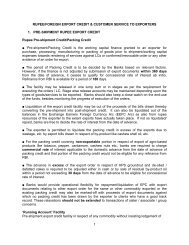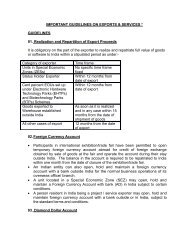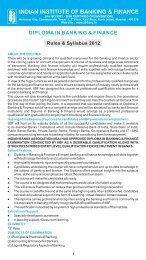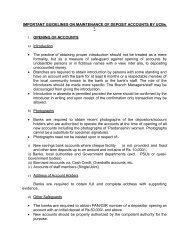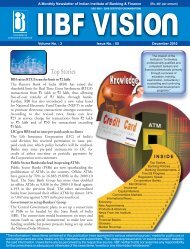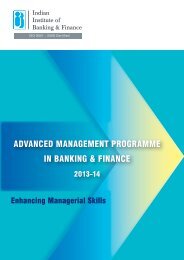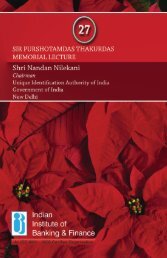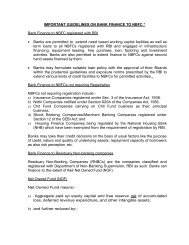Create successful ePaper yourself
Turn your PDF publications into a flip-book with our unique Google optimized e-Paper software.
Yunus also focuses on new category of businessnamed social business. This is a no-loss, no-dividendpaying company dedicated to solving economic orsocial problems.Micro Finance Organisations (MFO) in Bolivia had hugesuccess.It permitted a financial NGO (PRODEM) to bepromoted to a chartered bank (BancoSol). All MFOs , inBolivia, have received financial support from donors andgovernment.In Kenya, M-PESA has a success story in the fieldof money transfer and remittance, which has benefittedthe poor to the maximum. Kenya is the first countryin the world to use m-money services via M-PESAto transfer of money through mobile phone channel,in a cost effective and secured way. Microfinanceborrowers can receive and repay loans using thenetwork which enabled the MFIs to offer loans atmore competitive rate. Central Bank of Kenya oversightand supervision over M-PESA.According to management guru Prof. C. K. Prahalad'sanalysis in his much-acclaimed book “The Fortune at theBottom of the Pyramid”, MFIs remain virtually importantas a financial gateway to the poor. In 1997, the Micro-Credit Summit was formed to exchange ideas and start aglobal campaign dedicated to reach out to 100 million ofworld's poorest families by 2005. In 1997, fewer than 8million of the world's poorest received microcredit.According to the Summit 2011, more than 128 million ofthe world's poorest received a microloan in 2009-anall-time high. Assuming an average of five members perfamily, a total of 640 million persons are benefitted, whichis greater than the combined population of EuropeanUnion and Russia. The Microcredit Summit campaignaims to reach 175 million of the world's poorest familyby 2015 and ensure that 100 million of these familiesmove above the World Bank's $1.25-a-day povertythreshold. The success story shows that poor peoplecan be valuable clients.The importance attached to microfinance can be gaugedfrom the fact that United Nations Economic and SocialCouncil proclaimed the Year 2005 as International Yearof Microcredit for “building inclusive financial sectors andstrengthening the powerful but untapped entrepreneurialspirit existing in the communities around the world”.Further, in 2009, the G 20 Leadership Summit in Torontoendorsed the importance of the work done by the G-20Financial Inclusion Experts Group. The group releasednine “Principles for Innovative Financial Inclusion” whichis very significant for policy makers in various countries.This focuses on : cultivating a broad-based governmentcommitment to financial inclusion, promotingtechnological and institutional innovation as a means toexpand financial system access and usage, promotingfinancial literacy etc.Section-IVUnion Budget, 2005-06 and RBI follow-upIn a major policy announcement on micro-financialinstitutions, the Hon'ble Finance Minister stated in theUnion budget 2005-06 that :At present micro finance institutions (MFI) obtain financefrom banks according to guidelines issued by ReserveBank of India. MFIs seek to provide small scale creditand other financial services to low income householdsand small informal businesses. Government intends topromote MFIs in a big way. The way forward is to identifyMFIs, classify and rate such institutions and empowerthem to intermediate between the lending banks and thebeneficiaries.In this backdrop, RBI constituted an internal group inMarch 2005, under the chairmanship of Shri H.R. Khan,(now Deputy Governor) RBI, with terms and references,inter alia, to identify steps to be taken to promote MFIsand propose a system for their classification and ratingand to examine the extent of regulation of MFIs.Khan Working Group (2005)special featureIt is to the credit of Khan Working Group that hasundertaken an in-depth study of the existing MFIstructure in India and discussed at length the innovationand experiments in Bangladesh, the Philippines, SouthAfrica, Brazil, Kenya in bridging the banking outreachin rural sector. It studied and analysed the existingregulatory framework and need for a new and exclusiveregulation for MFI sector. The Working Group broadlyThe Journal of Indian Institute of Banking & Finance October - December 2011 55



